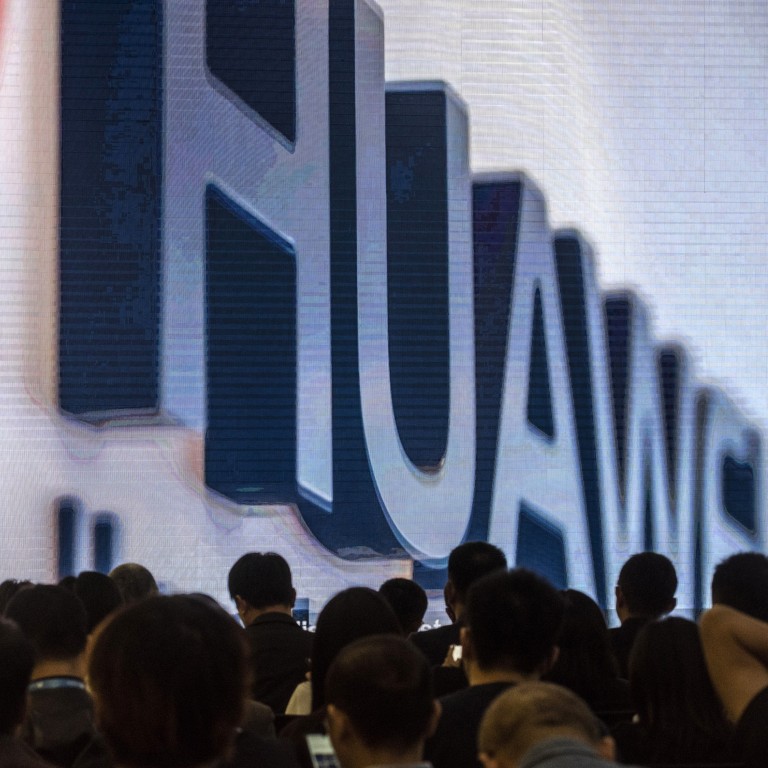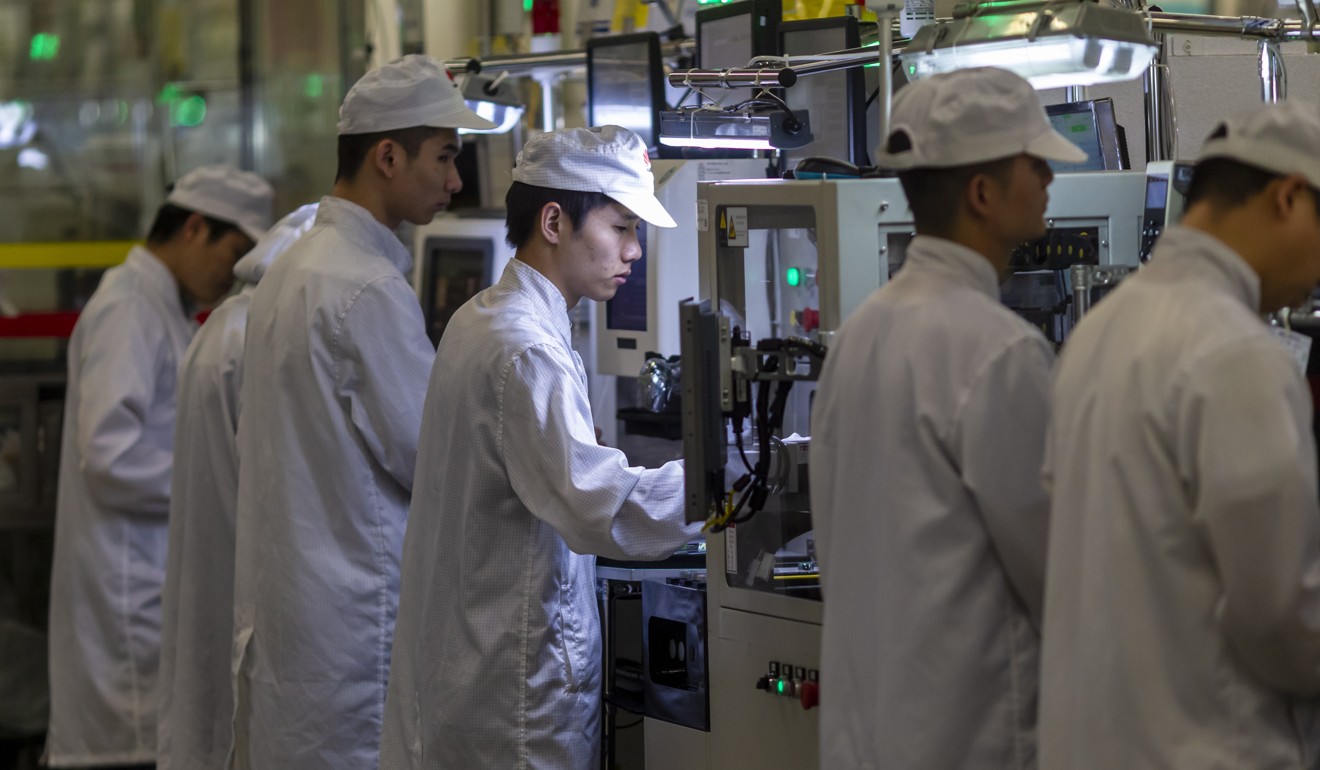
Live-streaming and surgical masks: China’s smartphone brands adapt to business under coronavirus restrictions
- Canalys and Strategy Analytics expect smartphone shipments to drop 50 per cent in the first quarter from a year ago, while IDC sees a 30 per cent slide
- Chinese factories operated by subcontractors such as Foxconn and Pegasus produce 70 per cent of all smartphones sold globally
Chinese smartphone maker Xiaomi became the first among its peers to host an online-only flagship product launch this week in a move that is likely to become commonplace in the country’s tech sector amid the ongoing coronavirus crisis.
Xiaomi founder Lei Jun, originally from Hubei province where he attended university in Wuhan – the epicentre of the coronavirus outbreak – became emotional on Thursday as he opened the live-streamed video conference.
“Wuhan is a city of heroes. Wuhan people are brave, confident and optimistic … Life can be affected by the epidemic, but we cannot be defeated by it,” he said, holding back tears while wearing a mask.
While the purpose of the event was to launch the company’s new Mi 10 flagship 5G phone, the billionaire entrepreneur admitted that the smartphone industry was “quiet” amid the public health crisis and he hoped normal production would resume soon.
The online event came after Lu Weibing, vice-president of Xiaomi and general manager for its Redmi brand, apologised to users in a Weibo post last month, saying that the planned release of new products had been disrupted and that the company was making adjustments amid the setbacks facing the entire industry.
Xiaomi still plans to launch ten 5G phones in 2020 despite coronavirus
Live-streaming of product launches has quickly emerged as one alternative to bringing new devices to market at a time when the coronavirus crisis has temporarily ended prospects for large gatherings of people at such events.
The coronavirus outbreak has forced the temporary closure of smartphone factories across China after authorities imposed restrictions on large groups of people being in one place.
Most bricks and mortar smartphone retail stores are closed to reduce person-to-person contact and those that remain open have seen a dramatic decrease in customers as residential communities in mainland Chinese cities have gone into partial lockdown to prevent the spread of the deadly respiratory disease.
As a result, research firms have slashed their forecasts for China’s smartphone sales. Canalys and Strategy Analytics expect shipments to drop 50 per cent in the first quarter from a year ago, while IDC sees a 30 per cent slide.
“The outbreak of coronavirus is likely to disrupt the supply chain and new product launch cycle during the first half of this year,” Wu Yiwen, senior analyst at Strategy Analytics, wrote in a report. “Moving online is more short-term oriented … I think these efforts are effective to some degree [in mitigating the coronavirus impact],” she told the Post.
Other major brands including Huawei’s Honor, Oppo-spin off Realme and Xiaomi’s Blackshark have also gone online for new product launches.
Vivo pulls out of world’s biggest mobile trade show over coronavirus concerns
With limited access to physical shops, consumers have no choice but to buy their new phones online. The proportion of online sales will increase significantly in the first half of the year, IDC said in a report released early this month.
Although online product launches and e-commerce stores provide a medium for smartphone vendors to showcase and sell new devices, offline channels are still important because they provide more interaction with potential consumers.
“Offline channels [are still very important], accounting for 70 per cent of the total sales in China,” said Jia Mo, an analyst from research agency Canalys.
The importance of offline channels for product launches and sales can be seen in the efforts by China’s leading smartphone makers, including Huawei, Oppo, Xiaomi, and ZTE, to stick with the mobile industry’s biggest annual exhibition before it was cancelled due to concerns over the coronavirus outbreak. The companies sent teams of employees to Spain weeks ahead of MWC Barcelona after organisers said all visitors would have to prove that they had not been in China for at least 14 days before the show.
However, after major exhibitors including LG, Nokia, Vodafone, AT&T, Sony and Intel pulled out of the event, the organiser GSMA was left with no choice but to cancel the entire conference, which was originally scheduled for February 24 to 27.
Oppo said it respected the decision of GSMA, adding that the company has postponed its Oppo Find X2 global conference that was to take place two days before MWC Barcelona. Xiaomi delayed the global product launch of its flagship Mi 10 series originally planned for February 23.
World’s biggest mobile trade show cancelled over coronavirus crisis
Vivo, which had announced its intention to pull out before the show was cancelled, was instead “pushing hard for its online-focus series, which is expanding to India this quarter,” said Wu from Strategy Analytics. “Expanding to overseas markets is more long-term oriented.”
With new product launches and overseas expansion continuing, albeit mostly via online marketing, the focus is on the resumption of full scale production at Chinese smartphone factories operated by subcontractors such as Foxconn and Pegasus, which produce 70 per cent of all smartphones sold globally.

Traditionally, the period from February to March is the product testing phase for manufacturers before they ramp up mass production after the Lunar New Year holiday. “Any change of product plans in the first half of the year will hurt medium and even long-term plans,” the IDC report said, adding that it forecasts China’s smartphone market will contract 4 per cent in 2020.
If smartphone subcontractors like Foxconn, Pegatron and Flex – which produce phones for brands like Apple and Huawei – cannot resume full capacity in the near term, it could hamper the ability of the brands to bring their newest products to market.
Oppo is looking to fill the shortfall by allocating more of its production to manufacturing centers in Indonesia, India, Algeria, Bangladesh and other countries, according to a report from state-run media Xinhua.
Oppo vice-president Shen Yiren said in a Weibo post that the epidemic will substantially affect the production of its next flagship smartphone as supply would be tight. “The productivity of any part of the supply chain, even the packing box, will impact the factory output of the whole phone,” Shen said in the post.
With the medical sector experiencing a shortage of resources, some electronics companies have started manufacturing protective face masks themselves. Apple’s main supplier Foxconn has switched some of its production lines to make surgical masks for its own staff, as it delays resumption of full production due to the outbreak, while Vivo reportedly has two production lines allocated for mask making.
“Factories are taking measures to prevent the coronavirus but mobile [device] production is labour intensive work … If one virus case is found in a factory, it will be a disaster,” said Jia. “However, if production cannot resume, the factories face huge losses every day.”
Automation could help production lines recover more quickly during a crisis. Taiwanese-owned Foxconn expects to fully automate 30 per cent of its production in China by this year. “Automation can work as a solution and it is a trend, but the automating process requires high [investment] cost,” said Zaker Li, a senior industry analyst at IHS Markit.
Purchase the China AI Report 2020 brought to you by SCMP Research and enjoy a 20% discount (original price US$400). This 60-page all new intelligence report gives you first-hand insights and analysis into the latest industry developments and intelligence about China AI. Get exclusive access to our webinars for continuous learning, and interact with China AI executives in live Q&A. Offer valid until 31 March 2020.


